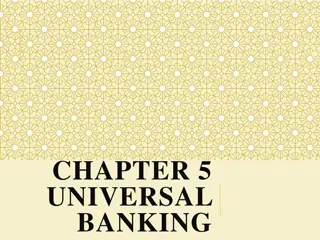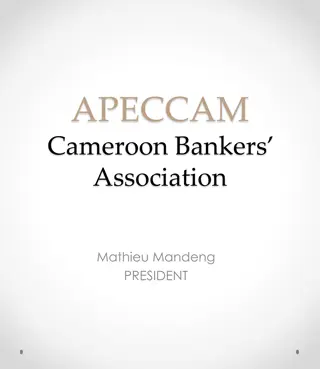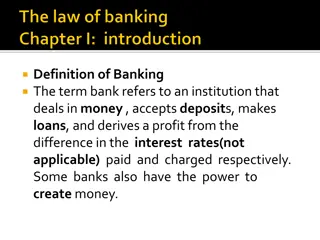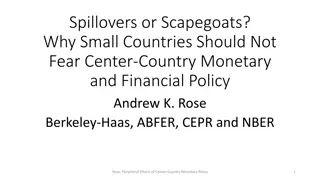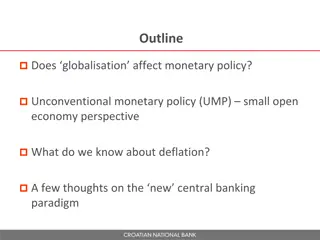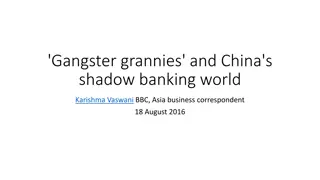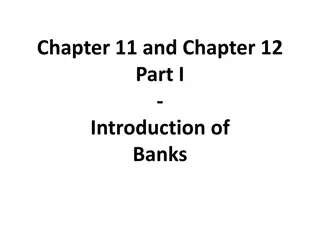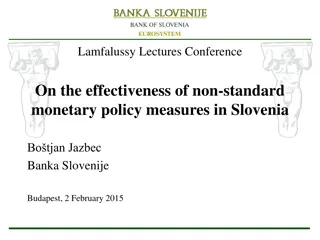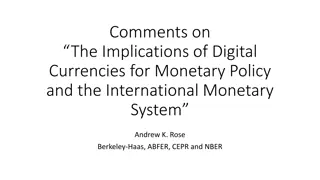Understanding Banking Concepts and Monetary Policies
Explore key banking concepts such as Currency Deposit Ratio, Reserve Deposit Ratio, Statutory Liquidity Ratio, High-Powered Money, and their significance in regulating the money supply and liquidity in an economy. These concepts shed light on the relationship between currency, deposits, reserves, and the money multiplier effect.
Download Presentation

Please find below an Image/Link to download the presentation.
The content on the website is provided AS IS for your information and personal use only. It may not be sold, licensed, or shared on other websites without obtaining consent from the author. Download presentation by click this link. If you encounter any issues during the download, it is possible that the publisher has removed the file from their server.
E N D
Presentation Transcript
BANKING CONCEPTS PREPARED BY ANINDITA CHAKRAVARTY
CURRENCY DEPOSIT RATIO The currency deposit ratio shows the amount of currency that people hold as a proportion of aggregate deposits. The currency deposit ratio (cdr) is the ratio of money held by the public in currency to that they hold in bank deposits. cdr = CU/DD. If a person gets Re 1 she will put Rs 1/(1 + cdr) in her bank account and keep Rs cdr/(1 + cdr) in cash. It reflects people's preference for liquidity.
RESERVE DEPOSIT RATIO It is the percentage of deposits which commercial banks are required to keep as cash according to the directions of the central bank. The reserve ratio is an important tool of the monetary policy of an economy and plays an essential role in regulating the money supply. When the central bank wants to increase money supply in the economy, it lowers the reserve ratio. As a result, commercial banks have higher funds to disburse as loans, thereby increasing the money supply in an economy and vice-versa. It is also known as the cash reserve ratio
STATUTORY LIQUIDITY RATIO Statutory Liquidity Ratio or SLR is a minimum percentage of deposits that a commercial bank has to maintain in the form of liquid cash, gold or other securities. It is basically the reserve requirement that banks are expected to keep before offering credit to customers.
HIGH POWERED MONEY High-powered money is the sum of commercial bank reserves and currency (notes and coins) held by the Public. High-powered money is the base for the expansion of Bank deposits and creation of money supply. The monetary base has traditionally been considered high-powered because its increase will typically result in a much larger increase in the supply of demand deposits through banks' loan-making, a ratio called the money multiplier.
The use of high-powered money consists of the demand of commercial banks for the legal limit or required reserves with the central bank and excess reserves and the demand of the public for currency. Thus high-powered money H=C+RR+ER where represents currency, RR the required reserves and ER the excess reserves








